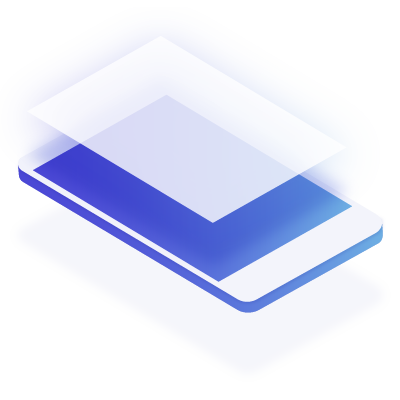User Stories Specification
Altcode Solutions provides a User Stories Specification Writing Service that transforms concepts into actionable software requirements. Their expertise bridges the gap between ideas and execution, empowering agile development and ensuring projects align with clients’ goals. Altcode combines innovation with careful planning for successful software development, one user story at a time.

Benefits
Benefits of User Stories Specification

Enhanced Communication
User stories serve as succinct narratives that effectively bridge the divide between team members with varying technical expertise. They offer a lucid and user-centric depiction of the desired functionality, thereby ensuring comprehensive comprehension of the project’s ultimate objective. This elevated level of communication mitigates ambiguity, cultivates cohesion, and fosters synergy, thereby resulting in greater efficiency and triumph in software development endeavors.

Prioritization and Focus
The utilization of user stories facilitates the prioritization of features by their perceived value to end-users. These stories establish precise requirements and acceptance criteria, simplifying the evaluation of the significance of each feature. Consequently, a meticulously organized backlog and a clearly delineated roadmap are formed, guaranteeing that development endeavors are focused on the most vital and influential elements of the project.

Reduced Ambiguity
User stories effectively eliminate any potential confusion or uncertainty by providing detailed acceptance criteria that clearly define when a feature is deemed finished. This level of precision greatly reduces the likelihood of any misunderstandings or discrepancies in terms of expectations. By having clear specifications in place, the necessity for time-consuming revisions and rework is significantly diminished, leading to a more streamlined and efficient development process. Ultimately, this results in substantial cost savings.

Agile Flexibility
These User stories serve as a fundamental building block in Agile development, possessing the remarkable ability to adjust and grow alongside evolving project requirements or newfound perspectives. This inherent flexibility empowers development teams to swiftly address fluctuating priorities, user input, or market dynamics, effectively upholding the pivotal principles of adaptability and responsiveness within Agile methodology. Ultimately, this ensures that the software consistently aligns with the ever-evolving demands of the project.
Vidéo
Guide line to User Stories Specification
STEPS
4-step approach

Step 1
Identify User Personas and Goals
In order to develop user stories that are impactful, it is crucial to first identify and comprehend the main user personas and their objectives within your system. These personas embody typical users, each possessing distinctive attributes, requirements, and motivations. These personas may be derived from demographics, occupational roles, or other pertinent factors. By precisely defining the identity of your users and their desired accomplishments, you lay a solid groundwork for crafting user stories that effectively address real-world user needs. This strategic approach guarantees that your software development endeavors are firmly rooted in user-centricity, thereby enhancing the pertinence and usability of the end product.
Step 2
Create User Stories
With a comprehensive understanding of your user personas and their objectives, you can proceed to craft user stories. Each user story should adhere to a straightforward template: “As a [user persona], I desire [a specific feature] in order to accomplish [a distinct benefit or goal].” This succinct narrative structure enables you to precisely articulate the user’s desires and the underlying rationale. The constituent elements of user stories, namely the “who,” “what,” and “why,” establish a clear foundation for actionable requirements. By serving as a link between user needs and development tasks, user stories ensure that your team prioritizes the delivery of functionality that directly aligns with user expectations.


Step 3
Define Acceptance Criteria
In order to remove any uncertainty and establish a mutual understanding of success, it is crucial to establish explicit acceptance criteria for every user story. These criteria consist of specific requirements that must be fulfilled for a user story to be deemed finished. They serve as a comprehensive checklist for both the development team and stakeholders, outlining the precise features, functionality, and behaviors that are anticipated. By having clearly defined acceptance criteria, the likelihood of misunderstandings and inconsistencies is minimized, facilitating the evaluation of whether a user story has been effectively implemented. This measure establishes a shared vocabulary for evaluating progress and upholding excellence throughout the development journey.
Step 4
Prioritize and Estimate
Once user stories have been created and their acceptance criteria defined, the subsequent task is to prioritize and estimate them. Prioritization involves arranging the user stories in order of importance, taking into consideration their value to end-users and alignment with project goals. It entails determining which user stories should be developed first in order to achieve the most significant impact. On the other hand, estimation involves evaluating the effort needed to complete each user story, often using relative measures like story points. These estimations serve as a foundation for planning and allocating resources. This step aids in the creation of a well-organized backlog and a development roadmap. By addressing the most valuable features initially, you ensure that the project remains focused on delivering high-impact functionality and provides a clear guidance for the development team.

Qualities of our solutions
Benefits of our software solutions

Friendly and responsive UX

Easily configurable

Quality customer support

Modern web technologies

Corrective and evolutionary maintenance

Custom roles and permissions

Full documentation

Integrated analytics and reporting tools

“Talented consultants and development experts”
Guillaume L. – IT Director at Rouge Editions

“Quality digital services, respect of deadlines and affordable prices”
Emilie B. – Marketing Manager

“Team that helped us write specifications and move forward in the development of our project”
Nina M. – Account Manager
software development approach
User Stories Specification and software development
The act of writing User Stories Specifications holds immense importance in the realm of software development, especially when following Agile and iterative methodologies. This practice revolves around articulating software requirements from the perspective of the user. User stories serve as a means to define features or functionalities, accompanied by explicit criteria for success. This approach effectively aligns software development with the actual needs of users, promoting flexibility, and fostering seamless communication among development teams. Ultimately, User Stories Specification Writing guarantees that software development stays committed to delivering value to end-users, while also enabling adaptability and collaboration throughout the entire development journey.
Customer cases
Discover examples of customer projects
Projects where customers have called on us for functional analysis, drafting of specifications and specifications, design of screen models and functional support for development teams (PO Product Owner)

Need advice?
With Altcode Solutions, you have the possibility to move forward on your software project with a single developer or with a dedicated team. Our flexible offerings make it easy for projects to start, scale, and end – As needed.








